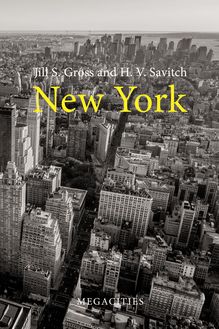-
 Univers
Univers
-
 Ebooks
Ebooks
-
 Livres audio
Livres audio
-
 Presse
Presse
-
 Podcasts
Podcasts
-
 BD
BD
-
 Documents
Documents
-
- Cours
- Révisions
- Ressources pédagogiques
- Sciences de l’éducation
- Manuels scolaires
- Langues
- Travaux de classe
- Annales de BEP
- Etudes supérieures
- Maternelle et primaire
- Fiches de lecture
- Orientation scolaire
- Méthodologie
- Corrigés de devoir
- Annales d’examens et concours
- Annales du bac
- Annales du brevet
- Rapports de stage
La lecture à portée de main
Vous pourrez modifier la taille du texte de cet ouvrage
Découvre YouScribe en t'inscrivant gratuitement
Je m'inscrisDécouvre YouScribe en t'inscrivant gratuitement
Je m'inscrisEn savoir plus
Vous pourrez modifier la taille du texte de cet ouvrage
En savoir plus

Description
As one of the fastest growing cities in Europe, London has become a mass generator of employment and a magnet for inward migration. Yet London is also a divided city, whose expansion has generated many planning challenges.
This book explores the tensions, complexities and difficulties in mobilizing policy agendas in London, but it also argues that public policy still matters and makes a significant difference to outcomes. The authors show how the market-led development of London has meant that the state supports more private-sector-led governance and this has given rise to widespread privatization of the city’s decision-making processes and policy implementation. As a key command and control centre in the global economy, London’s privatized model has become one for other megacities to emulate.
1. Planning challenges and the emergence of a london model2. Public regulation and planning for the global city3. Private regulation, governance, and the rise of the para-state capital4. Governing the financing and funding of the london model5. London’s housing crisis and emergence of new residential landscapes6. Tall buildings and the built environment7. Major infrastructure projects: the building of the Thames Tideway Tunnel and Crossrail8. People, diversity and community9. Challenging the para-state: political representation, community politics, and the right to regulate10. Risks, resilience and failure: what next for the london model?
Sujets
Informations
| Publié par | Agenda Publishing |
| Date de parution | 28 juillet 2022 |
| Nombre de lectures | 0 |
| EAN13 | 9781788213080 |
| Langue | English |
Informations légales : prix de location à la page 0,1750€. Cette information est donnée uniquement à titre indicatif conformément à la législation en vigueur.
Extrait
London
Megacities
Series Editor: H. V. Savitch
As drivers of economic growth, demographic change and consumption, hyper-conurbations offer unique opportunities to their hinterlands and national economies, as well as huge challenges of governance, planning and provisioning. Each book in this series examines the political and economic development of a specific megacity and explores how and why they have evolved and how policy decisions, couched in geopolitics, have shaped their outcomes. The series covers both paradigmatic mature megacities of the developed world, as well as the fast-growing emerging megacities of South and East Asia, and Latin America.
Published
London
Mike Raco and Frances Brill
Paris
Christian Lefèvre
London
Mike Raco and Frances Brill
© Mike Raco and Frances Brill 2022
This book is copyright under the Berne Convention.
No reproduction without permission.
All rights reserved.
First published in 2022 by Agenda Publishing
Agenda Publishing Limited
The Core
Bath Lane
Newcastle Helix
Newcastle upon Tyne
NE4 5TF
www.agendapub.com
ISBN 978-1-78821-305-9 (hardcover)
ISBN 978-1-78821-306-6 (paperback)
British Library Cataloguing-in-Publication Data
A catalogue record for this book is available from the British Library
Typeset by Newgen Publishing UK
Printed and bound in the UK by CPI Group (UK) Ltd, Croydon, CR0 4YY
Contents
Acknowledgements
1 Planning in the shadow of the market: the emergence of a London model
2 Public regulation and planning for the global city
3 Private regulation, governance and the rise of the parastate
4 Political representation, community politics and the right to regulate
5 Governing the development, financing and funding of the London model
6 London’s housing crisis and emergence of new residential landscapes
7 Planning for tall buildings: global ambitions and local discontents
8 Major infrastructure projects: building, financing and delivering the Thames Tideway Tunnel and Crossrail
9 Planning without growth: what next for the London model?
References
Index
Acknowledgements
The book draws on over a decade of research during which we have examined different aspects of London’s planning and development. Much of it was written and researched during the Covid-19 pandemic and we wish to express our deep gratitude to all of those who made the work possible during a time of unprecedented difficulty. In particular we would like to thank two Sarahs – Sarah Read and Sarah Hughes-McLure (and Oslo) – for their perfect balancing of inspiration and distraction during the lockdown.
Many of our ideas were developed collaboratively and would not have emerged without the intellectual engagement of, and ongoing encouragement from, a range of people – too many to mention. But we would like to express particular thanks for the great conversations with Tuna Tasan-Kok and Sara Özogul at the University of Amsterdam and Patrick Le Galès and colleagues at Sciences-Po Paris. Thanks especially to the WHIG research team at UCL for all their constant encouragement, intellectual engagement and support – Claire Colomb, Dan Durrant, Jess Ferm, Sonia Freire-Trigo, Iqbal Hamiduddin, Nicola Livingstone, Paul Moawad, Danielle Sanderson, John Tomaney, Callum Ward and Annie Webb. The book could not have happened without you.
For the arguments around new investors, we would like to thank all those who supported Frances’s PhD research in the Department of Geography at UCL, especially Jenny Robinson and Ludovic Halbert, and Phoebe Stirling whose stint in Cambridge has proven particularly inspirational.
Arguments developed in the book were discussed at a variety of events, conferences and seminars and we would like to thank all those who asked questions and raised comments. Allan Cochrane, the late John Henneberry, Maria Kaika, and Jennifer Peters also acted as hugely valuable respondents and contributors to WHIG sessions. Special thanks also to the various reading and writing groups at University of Cambridge’s Geography Department and the Bartlett School of Planning, UCL. In particular we would like to thank Joe Penny for his wise words and reminding us it is not “how to publish” but “why publish” that matters.
Many thanks also to Hank Savitch, the series editor and Alison Howson of Agenda Publishing, for their input and support over the last couple of years and their patience in the wake of the pandemic. We also gratefully acknowledge the comments of referees on the original draft – their insights and thoughts were incredibly valuable.
Formally, we also wish to acknowledge the support of the Economic and Social Research Council UK [Grant Number: ES/S015078] under the project “WHIG What is Governed in Cities: Residential investment landscapes and the governance and regulation of housing production”.
Mike Raco, Petts Wood, Kent Frances Brill, Trumpington, Cambridge
1
Planning in the shadow of the market: the emergence of a London model
This book addresses what, on the face of it, seems a straightforward question: who is governing London and how? Similar questions are being asked in cities and societies across the world in an era that is shaped by relentless processes of globalization, multiple crises and insecurities. The book is therefore an assessment of the governance arrangements that shape the city’s planning and development, who controls them and whose interests they serve (and whose they do not). We show that over recent decades there has been a slow but steady corrosion of the public realm, in which powers, resources and responsibilities have been voluntarily ceded to a range of players at multiple scales, found mainly in the private sector. There is a lot to be learned from London. It is a context in which there has been a deliberate and purposeful agenda to generate dependency on private finance and service providers. All planning deliberations and political choices are now conducted in the shadow of the market , with an eye to what these new groups of players – what we term the parastate – want and need. There is nothing inevitable about what has happened. We begin by setting out the “simple story” that dominates policy and (some) academic thinking about London before turning to some of the wider difficulties that policymakers, businesses and citizens increasingly face in the wake of decades of change.
London’s simple story: from the city of decline to the triumphant city
During the 2000s many hailed London’s economic and demographic expansion as an archetype of a broader narrative of urban triumphalism. For a range of commentators, politicians, academics and planners its recent experiences can be captured in a simple story of change that explains the much-lauded transformation from an earlier period of structural decline. The story begins with a view of its imperial past that acted as a driver of growth in the early modern and industrial eras but left the city ill-suited to the demands of post-war economic and social change. Its urban environments were characterized by poorly planned and maintained infrastructure, with dilapidated housing and commercial property stock and a misfunctioning postwar welfare state that had been responsible for the delivery of poor-quality modernist estates and declining private sector dynamism.
By the 1980s critics presented London’s governance arrangements as sclerotic, unable to cope with the demands of the modern political economy, particularly the role of finance, and lacking the technical and managerial capacities to bring about a much-needed transformation of the city’s infrastructure. Its politics was perceived as being over-dominated by left-of-centre political elites, hostile to globally oriented forms of investment and over-focused on “old-fashioned”, municipalist approaches to urban management (see Hatherley 2020 for a wider discussion). These elites, it was claimed, were unable to grasp the opportunities opened up by the internationalization of trade and associated flows of people and commerce. Worse, London was seen to be falling behind competitors, with a persistent seeping away of people and economic and cultural activity. There were serious discussions in the 1970s and 1980s over its position as a leading example of cyclical counter-urbanization: the world’s first million-plus city in the nineteenth century and the first to decline in the twentieth (Hall 1982 ). Its experiences seemed to chime with the visions of urban commentators on the political right who predicted the end of “ungovernable” large cities (Buchanan & Tollison 1984 ; Yates 1977 ). As political entities, cities were simultaneously portrayed as too centralizing to enable effective citizen control and too decentralized to facilitate strategic and effective planning interventions. Moreover, London’s politics could be captured by elite interests who posed as “representatives” of urban populations, but in practice consisted of local oligarchies for whom urban politics was a vehicle for the pursuit of political power. At the same time, many analysts saw the economic future of cities as belonging to “small and medium-sized” places, in the same way that command-and-control Fordist economies had given way to post-Fordist forms of flexible specialization (Porter & Sölvell 1998 ). Megacities had had their day.
This simple story then goes on to describe an era of turnaround and triumph. In the mid-1980s following the abolition of the left-of-centre Greater London Council (GLC), a new set of entrepreneurial thinking began to emerge. There was a reformed and updated global outlook on the part of policymakers, who were increasingly prepared to reach out to elite actors and business organizations to help transform the city’s fortunes. Population levels first stabilized and then began to grow again; the economy saw rapid expansion, especially in the service and financial sectors following the “big bang” of financial deregulation and tec
-
 Univers
Univers
-
 Ebooks
Ebooks
-
 Livres audio
Livres audio
-
 Presse
Presse
-
 Podcasts
Podcasts
-
 BD
BD
-
 Documents
Documents
-
Jeunesse
-
Littérature
-
Ressources professionnelles
-
Santé et bien-être
-
Savoirs
-
Education
-
Loisirs et hobbies
-
Art, musique et cinéma
-
Actualité et débat de société
-
Jeunesse
-
Littérature
-
Ressources professionnelles
-
Santé et bien-être
-
Savoirs
-
Education
-
Loisirs et hobbies
-
Art, musique et cinéma
-
Actualité et débat de société
-
Actualités
-
Lifestyle
-
Presse jeunesse
-
Presse professionnelle
-
Pratique
-
Presse sportive
-
Presse internationale
-
Culture & Médias
-
Action et Aventures
-
Science-fiction et Fantasy
-
Société
-
Jeunesse
-
Littérature
-
Ressources professionnelles
-
Santé et bien-être
-
Savoirs
-
Education
-
Loisirs et hobbies
-
Art, musique et cinéma
-
Actualité et débat de société
- Cours
- Révisions
- Ressources pédagogiques
- Sciences de l’éducation
- Manuels scolaires
- Langues
- Travaux de classe
- Annales de BEP
- Etudes supérieures
- Maternelle et primaire
- Fiches de lecture
- Orientation scolaire
- Méthodologie
- Corrigés de devoir
- Annales d’examens et concours
- Annales du bac
- Annales du brevet
- Rapports de stage








